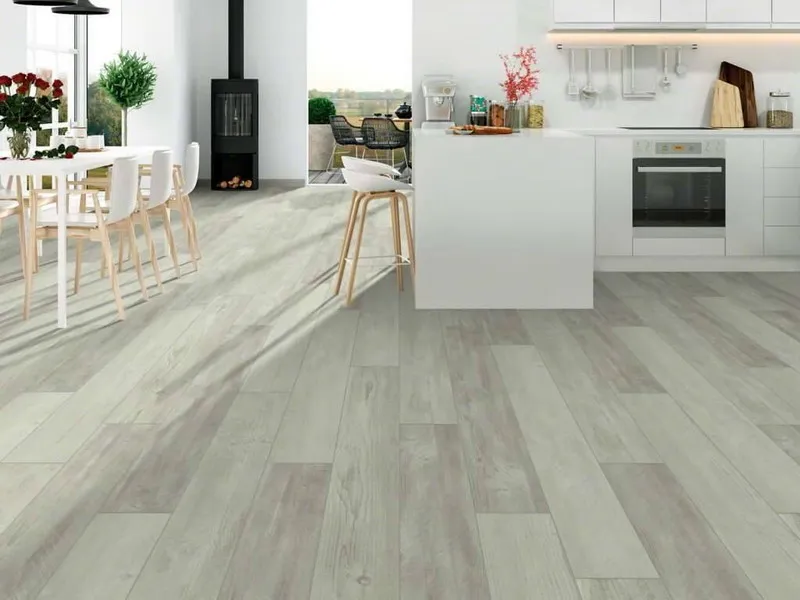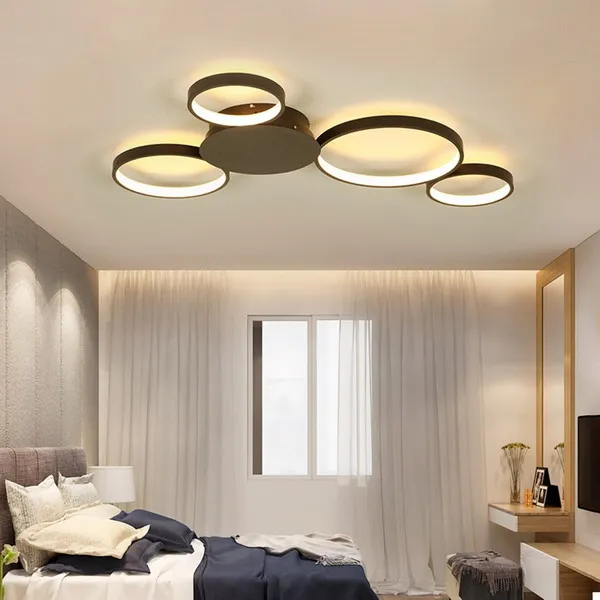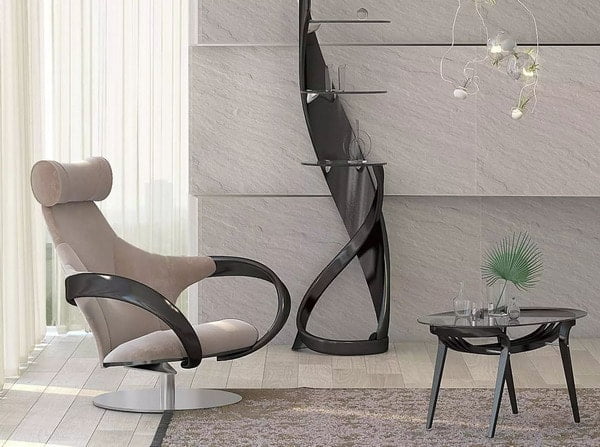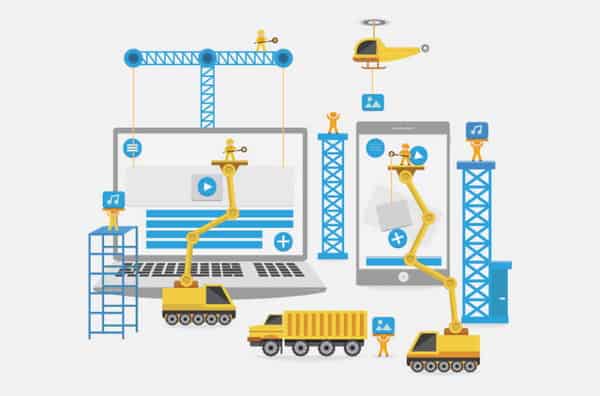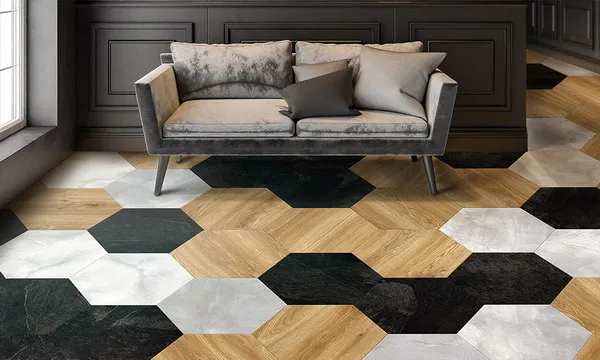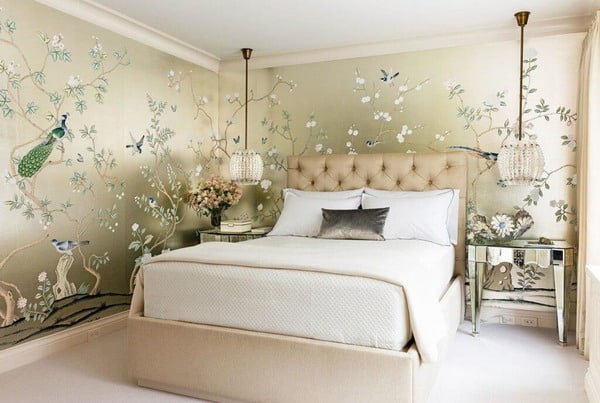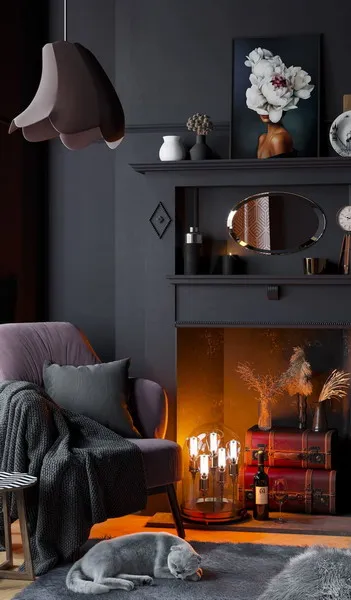Sustainable Flooring Trends 2025
Last Updated on May 4, 2024 by zeidqi
Sustainable flooring trends for 2025 reflect an increasing commitment to eco-friendly choices, with homeowners seeking flooring options that prioritize environmental responsibility without compromising on style and durability. The top sustainable flooring trends in 2025 showcase a diverse range of materials and designs that align with the growing demand for sustainable living.
In the ever-evolving landscape of interior design and construction, sustainability takes center stage as we approach 2025. The quest for eco-friendly and socially responsible materials is transforming the way we approach flooring choices. Sustainable flooring trends in 2025 are marked by a harmonious blend of innovation, aesthetics, and environmental consciousness.
A notable trend is the increasing popularity of modular and recyclable flooring systems. These systems are designed with the entire lifecycle in mind, from production to installation and eventual removal. This shift towards modular solutions not only reduces waste but also allows for easier updates and replacements, aligning with the principles of a circular economy.
Additionally, advancements in technology have paved the way for sustainable flooring options that mimic the look and feel of traditional materials without the environmental impact. Digital printing techniques, for instance, allow for realistic replication of natural patterns and textures, providing a wide array of design choices without depleting precious natural resources.
Moreover, consumers are becoming more discerning about the sourcing and production processes of flooring materials. Transparency in the supply chain, coupled with certifications for sustainable practices, is becoming a decisive factor in purchasing decisions. From recycled content to low-VOC (volatile organic compound) finishes, the market is witnessing a surge in demand for products that prioritize both environmental and human health.
As we enter 2025, sustainable flooring is not merely a trend but a fundamental shift in mindset, reflecting a collective responsibility towards the planet. The coming years are poised to witness even more ingenious solutions that balance functionality, aesthetics, and environmental impact.
Sustainable flooring options prioritize environmentally friendly materials, renewable resources, and responsible manufacturing processes. Here’s a list of ten sustainable flooring choices.
Sustainable Bamboo Flooring Trends 2025
Bamboo flooring has emerged as a sustainable and stylish alternative to traditional hardwood, and the trends for 2025 showcase its versatility and eco-friendly appeal. Bamboo, a fast-growing grass, matures quickly, making it an abundant and renewable resource. This inherent sustainability, combined with bamboo’s strength and durability, has propelled it into the spotlight of contemporary interior design.
One prominent trend is the innovation in bamboo flooring colors and finishes. While natural bamboo has its charm, manufacturers are increasingly offering a spectrum of stains and finishes, providing homeowners and designers with a broader palette to match diverse design schemes. This customization not only caters to individual preferences but also widens the scope of bamboo flooring applications.
Another key trend in 2025 is the integration of technology in bamboo flooring production. Advanced manufacturing processes enhance the performance of bamboo, making it more resistant to moisture, scratches, and wear. This technological evolution expands the suitability of bamboo flooring to a variety of spaces, including kitchens and bathrooms, traditionally challenging environments for wood-based flooring.
Furthermore, the rise of strand-woven bamboo flooring is notable in 2025. This manufacturing technique compresses bamboo fibers under high pressure and heat, resulting in an exceptionally durable and hard surface. Strand-woven bamboo provides a viable alternative to hardwoods in terms of strength while maintaining the eco-friendly credentials that make bamboo a sought-after material.
In the coming years, bamboo flooring trends are expected to continue evolving, driven by a commitment to sustainability and a growing appreciation for the aesthetic and functional qualities of this remarkable material.
Sustainable Cork Flooring Trends 2025
Cork flooring, celebrated for its eco-friendly characteristics and unique visual appeal, continues to make waves in interior design as we approach 2025. Derived from the bark of cork oak trees, cork is a renewable resource that can be harvested without causing harm to the trees, making it an inherently sustainable flooring option. The trends for cork flooring in 2025 showcase a fusion of natural aesthetics, technological advancements, and a commitment to environmental responsibility.
One noteworthy trend is the emphasis on natural variations and textures in cork flooring. Designers and homeowners are increasingly drawn to the authentic and organic look of cork, embracing its unique patterns and color variations. This trend aligns with the broader movement towards biophilic design, which seeks to incorporate natural elements into interior spaces for a more harmonious and visually pleasing environment.
In 2025, technological innovations are playing a crucial role in enhancing the performance of cork flooring. The development of advanced finishes and sealants makes cork more resistant to water, stains, and scratches, expanding its suitability for various spaces, including kitchens and bathrooms. These innovations not only improve the durability of cork flooring but also contribute to its longevity, further solidifying its status as a sustainable and long-lasting flooring option.
Furthermore, the versatility of cork is evident in the expanding range of colors and patterns available in the market. From light and airy tones to rich and dark hues, cork flooring options cater to diverse design preferences. This adaptability positions cork as a versatile choice for both residential and commercial spaces, contributing to its growing popularity in the design world.
As environmental consciousness continues to shape consumer choices, cork flooring is poised to remain a staple in sustainable design. Its natural beauty, coupled with technological advancements, ensures that cork remains a relevant and attractive flooring option well into the future.
Sustainable Reclaimed Wood Flooring Trends 2025
Reclaimed wood flooring, born from a commitment to sustainability and a desire for unique, character-rich materials, maintains its allure in interior design as we enter 2025. Salvaged from old structures like barns, warehouses, and factories, reclaimed wood embodies a sense of history and authenticity, making it a popular choice for those seeking a distinctive and environmentally responsible flooring option. The trends for reclaimed wood flooring in 2025 underscore a continued appreciation for its rustic charm, adaptability, and contribution to sustainable design practices.
One prevailing trend is the integration of mixed species in reclaimed wood flooring. Homeowners and designers are increasingly drawn to the eclectic and diverse aesthetic achieved by combining different wood species. This trend not only enhances the visual interest of the flooring but also reflects a commitment to utilizing a variety of reclaimed materials, further reducing the demand for newly harvested wood.
In 2025, the emphasis on custom finishes and textures is notable in the reclaimed wood flooring market. Designers are exploring creative techniques to enhance the natural beauty of reclaimed wood, such as hand-scraping, wire brushing, and distressing. These artisanal finishes not only add character to the flooring but also contribute to a sense of craftsmanship and individuality in interior spaces.
Additionally, the concept of “storytelling” through reclaimed wood is gaining traction. Homeowners are increasingly interested in learning about the history of the wood they bring into their homes – the origin of the structures it came from, the years it weathered, and the unique features that tell a story. This trend aligns with a broader cultural shift towards conscious consumerism and a desire for meaningful, curated spaces.
As sustainability remains a driving force in design decisions, reclaimed wood flooring is expected to maintain its popularity in 2025 and beyond. Its timeless aesthetic, coupled with the environmental benefits of repurposing existing materials, positions reclaimed wood as a key player in the sustainable flooring landscape.
Sustainable Linoleum Flooring Trends 2025
Linoleum flooring, once a staple in mid-century homes, is experiencing a renaissance in 2025, thanks to its sustainable properties and versatile design options. As consumers increasingly prioritize eco-friendly choices, linoleum has emerged as a go-to flooring option for those seeking a combination of durability, aesthetic appeal, and environmental responsibility.
One prominent trend in linoleum flooring for 2025 is the expansion of color and pattern choices. Manufacturers are embracing bold and vibrant colors, as well as intricate patterns and designs, to cater to a diverse range of interior styles. This departure from the traditional perception of linoleum as plain or outdated positions it as a versatile and contemporary flooring option for modern homes.
Moreover, linoleum’s natural antimicrobial and hypoallergenic properties are gaining recognition in the market. As health-conscious consumers seek flooring solutions that contribute to indoor air quality, linoleum’s inherent ability to resist the growth of bacteria and allergens is a significant selling point. This trend aligns with the broader emphasis on creating healthier living environments, making linoleum an appealing choice for families and individuals with allergies or respiratory sensitivities.
Another notable trend is the integration of sustainable and recycled materials in linoleum production. Manufacturers are incorporating recycled content into linoleum formulations, further enhancing its eco-friendly profile. This commitment to sustainability resonates with environmentally conscious consumers, reinforcing linoleum’s position as a flooring option that aligns with both design and environmental values.
As we progress into 2025, linoleum flooring is shedding its outdated image and stepping into the limelight as a stylish, sustainable, and health-conscious choice. With an array of colors, patterns, and eco-friendly features, linoleum is poised to continue making a significant impact in the world of flooring trends.
Sustainable Recycled Glass Tile Flooring Trends 2025
Recycled glass tile flooring is making a bold statement in 2025, combining aesthetic appeal with eco-conscious design. Derived from post-consumer and post-industrial glass, this sustainable flooring option reflects a commitment to recycling and reducing environmental impact. The trends for recycled glass tile flooring in 2025 showcase innovation in design, color, and texture, making it a sought-after choice for those who prioritize both style and sustainability.
One standout trend is the creative use of color in recycled glass tile designs. Manufacturers are experimenting with vibrant hues, subtle gradients, and even translucent effects, allowing homeowners and designers to customize spaces with a wide range of color options. This versatility makes recycled glass tiles suitable for a variety of design aesthetics, from contemporary and minimalistic to eclectic and vibrant.
In 2025, the emphasis on texture is influencing recycled glass tile designs. From glossy and smooth finishes to textured and matte surfaces, the tactile experience of these tiles adds a layer of sophistication to interior spaces. This trend aligns with the desire for multi-sensory design experiences, as homeowners seek not only visually appealing but also tactically engaging elements in their homes.
Moreover, the trend towards larger-format tiles is gaining traction in recycled glass flooring. Large-format tiles not only contribute to a more seamless and expansive look but also reduce the number of grout lines, creating a cleaner and more modern aesthetic. This shift towards larger tiles reflects a contemporary design sensibility and a preference for streamlined, easy-to-maintain surfaces.
As the demand for sustainable and visually striking flooring options grows, recycled glass tile flooring is positioned to be a frontrunner in the design landscape of 2025. Its eco-friendly credentials, combined with evolving design trends, make it a compelling choice for those looking to make a statement while treading lightly on the planet.
Sustainable Recycled Metal Tile Flooring Trends 2025
In the world of sustainable flooring, recycled metal tile is emerging as a dynamic and visually impactful option, capturing the attention of designers and homeowners alike in 2025. Crafted from reclaimed metals, such as aluminum, copper, and steel, these tiles not only contribute to resource conservation but also add an industrial-chic aesthetic to interior spaces. The trends for recycled metal tile flooring in 2025 underscore a fusion of sustainability, durability, and design innovation.
One notable trend is the diversity in metal finishes and patinas. Manufacturers are embracing the natural weathering and aging processes of metals, offering tiles with distinct patinas that evolve over time. This trend appeals to those who appreciate the unique character that develops in each tile, creating a flooring surface that tells a story of its own. Additionally, the availability of various metal finishes, from sleek and polished to rugged and matte, provides design flexibility for different styles and settings.
Texture plays a pivotal role in the trends of recycled metal tile flooring in 2025. From hammered and brushed finishes to three-dimensional patterns, the tactile quality of these tiles adds depth and visual interest to floors. The interplay of light and shadow on textured metal surfaces creates a dynamic and ever-changing aesthetic, making recycled metal tiles a captivating choice for both residential and commercial spaces.
Furthermore, the trend towards geometric shapes and intricate patterns is gaining momentum. The versatility of metal allows for precise cutting and detailing, enabling the creation of elaborate designs that enhance the visual impact of the flooring. This trend aligns with a broader movement towards personalized and bespoke interior design, where every element is a reflection of the homeowner’s individual style.
As sustainability continues to be a driving force in design decisions, recycled metal tile flooring is poised to be a defining trend in 2025. Its unique blend of eco-friendliness, durability, and aesthetic versatility positions it as a compelling choice for those seeking a distinctive and sustainable flooring solution.
Sustainable Wool Carpet Trends 2025
Wool carpet, a timeless and luxurious flooring option, is experiencing a resurgence in popularity as we enter 2025. Known for its natural softness, durability, and sustainability, wool carpet has always been associated with premium quality. In the current design landscape, the trends for wool carpet in 2025 reflect a harmonious blend of classic elegance and modern innovation.
A notable trend is the use of neutral and earthy tones in wool carpet designs. Homeowners and designers are gravitating towards colors inspired by nature, creating serene and calming environments. This trend aligns with the broader movement towards biophilic design, which seeks to incorporate natural elements into interior spaces, promoting a sense of well-being and connection to the outdoors.
In 2025, wool carpet is also making a statement with bold patterns and textures. Geometric designs, abstract motifs, and textured weaves are gaining popularity, adding a contemporary flair to traditional wool carpets. This trend caters to a diverse range of design preferences, allowing for customization that complements various interior styles.
Furthermore, sustainability remains a key focus in wool carpet trends. Consumers are increasingly conscious of the environmental impact of their choices, and wool’s inherent eco-friendly properties make it a standout option. Wool is a renewable resource, biodegradable, and has a low carbon footprint, contributing to its appeal among environmentally conscious consumers.
As we move forward, wool carpet trends are expected to continue evolving, driven by a commitment to quality, sustainability, and design versatility. Its timeless allure, combined with modern design elements, ensures that wool carpet remains a top choice for those seeking both luxury and environmental responsibility in their flooring.
Sustainable Marmoleum Flooring Trends 2025
Marmoleum, a brand of linoleum flooring, is gaining prominence in 2025 as a sustainable and stylish choice for eco-conscious consumers. Made from natural materials like linseed oil, wood flour, and jute, marmoleum boasts a low environmental impact and offers a range of design possibilities. The trends for marmoleum flooring in 2025 reflect a growing appreciation for its unique qualities and a desire for sustainable design solutions.
One standout trend is the use of vibrant and bold colors in marmoleum flooring. Designers and homeowners are exploring the creative potential of this versatile material, incorporating lively hues and intricate patterns to make a design statement. This trend aligns with the shift towards more expressive and individualized interiors, where flooring becomes a canvas for personal style.
In 2025, the emphasis on natural and organic aesthetics is influencing marmoleum designs. Mimicking the look of natural materials such as stone, wood, and concrete, marmoleum offers a sustainable alternative without compromising on style. This trend caters to those who seek the beauty of nature in their interiors while prioritizing eco-friendly choices.
Moreover, the trend towards modular and customizable flooring solutions is gaining traction with marmoleum. The ability to mix and match colors and patterns, creating unique designs, allows for a high level of personalization. This modular approach not only adds a dynamic element to interior spaces but also aligns with the principles of a circular economy, as individual tiles can be replaced or reconfigured without the need for a complete flooring overhaul.
As marmoleum continues to establish itself as a leading sustainable flooring option, the trends in 2025 suggest a bright future for this eco-friendly material. Its versatility, vibrant aesthetics, and commitment to sustainability make marmoleum a compelling choice for those looking to make a positive impact on both their living spaces and the environment.
Sustainable Concrete Flooring with Recycled Trends 2025
Concrete flooring, known for its durability and industrial aesthetic, is evolving in 2025 with a focus on sustainability and the integration of recycled content. As consumers increasingly seek eco-friendly options in flooring, concrete with recycled content has emerged as a trend that combines strength with environmental responsibility.
One noteworthy trend is the use of recycled aggregates in concrete flooring. By incorporating recycled materials such as crushed glass, porcelain, or even recycled concrete, manufacturers are reducing the demand for virgin resources and minimizing the environmental impact of concrete production. This trend aligns with the broader movement towards circular design principles, emphasizing the importance of recycling and reusing materials.
In 2025, the appeal of concrete flooring with recycled content extends beyond its environmental benefits to embrace a range of design possibilities. The integration of colorful recycled glass or unique patterns from reclaimed materials adds an artistic and personalized touch to concrete floors. This trend caters to those who appreciate the raw beauty of concrete while seeking a flooring option that tells a sustainability story.
Moreover, the trend towards polished concrete is gaining momentum. Polished concrete not only enhances the visual appeal of floors with a sleek and modern finish but also contributes to sustainability by eliminating the need for additional floor coverings. This minimalist approach aligns with a preference for clean, uncluttered spaces and a commitment to reducing material consumption.
As we move further into 2025, concrete flooring with recycled content is expected to be at the forefront of sustainable design. Its adaptability, durability, and eco-friendly profile position it as a compelling choice for those who prioritize both style and environmental responsibility in their flooring decisions.
Sustainable Eco-Friendly Luxury Vinyl Plank (LVP) Trends 2025
Luxury Vinyl Plank (LVP) flooring, renowned for its versatility and affordability, is embracing eco-friendly practices in 2025 to meet the growing demand for sustainable flooring options. As technology advances, manufacturers are developing LVP with environmental consciousness, offering a range of trends that combine style, durability, and eco-friendliness.
One prominent trend is the use of recycled and recyclable materials in the production of LVP. Manufacturers are incorporating post-consumer recycled content, such as reclaimed vinyl or other recycled plastics, into the manufacturing process. This not only reduces the reliance on virgin materials but also minimizes waste and environmental impact, catering to consumers seeking more sustainable alternatives.
In 2025, the development of phthalate-free and low-VOC (volatile organic compound) LVP is a significant trend. Phthalates, commonly used in traditional vinyl flooring, have raised environmental and health concerns. Eco-friendly LVP addresses these concerns by eliminating or reducing the use of phthalates and other harmful chemicals, making it a safer choice for indoor air quality.
Additionally, the trend towards realistic wood and stone visuals in LVP continues to evolve. Advanced printing and embossing technologies allow for highly authentic representations of natural materials. This trend appeals to those who appreciate the aesthetic appeal of hardwood or stone floors but desire the durability and affordability offered by LVP.
Furthermore, the modular and DIY-friendly nature of LVP contributes to sustainable practices by reducing the need for professional installation and minimizing waste. Click-and-lock systems make it easy for homeowners to install or replace individual planks, promoting longevity and reducing the environmental impact associated with frequent floor replacements.
As eco-friendly LVP gains traction in 2025, it reinforces the idea that sustainable flooring options can be accessible, stylish, and durable. The convergence of environmental responsibility and design innovation positions eco-friendly LVP as a key player in the ever-expanding landscape of sustainable flooring choices.
In summary, the top 10 sustainable flooring trends in 2025 showcase a diverse array of materials and styles, catering to the increasing demand for environmentally conscious choices. From bamboo and cork to reclaimed wood and recycled materials, homeowners have a plethora of options that align with their commitment to sustainability without compromising on style and functionality.










